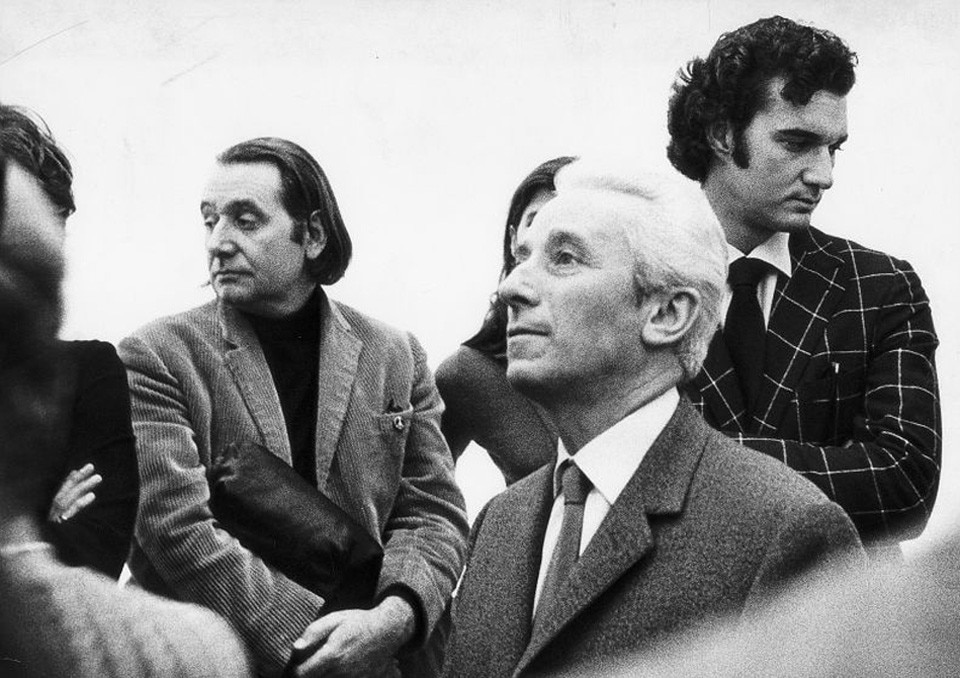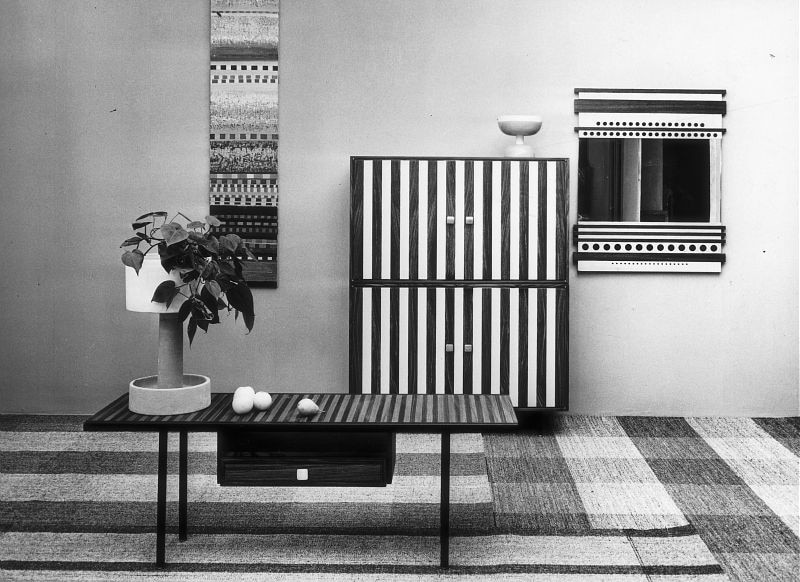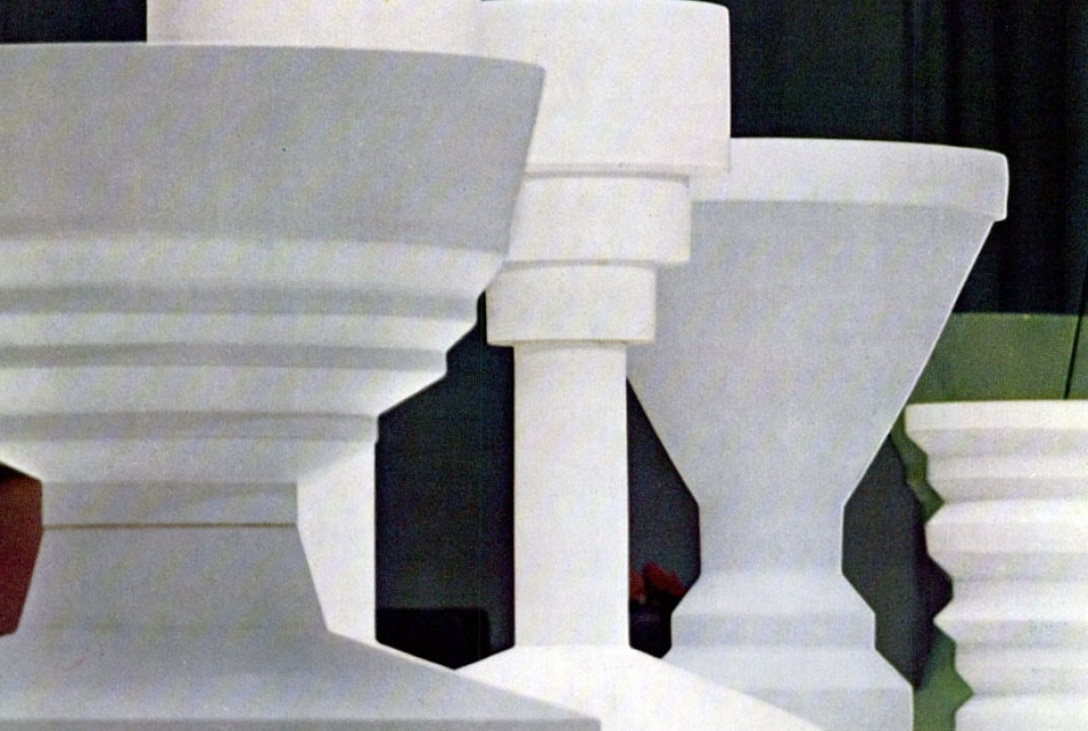“Gio Ponti always talked about, and always taught, the idea of a place, a form and a possibility of total perfection beyond everyday chaos, everyday uncertainty and everyday obscurity. His hope for a place that was certain, for a place, as Gio Ponti himself said, essential, silent and transparent, has always helped me, and has always helped members of my generation, and even of the generation preceding mine. Not only this, but I believe that the desire for a fixed, ecstatic and crystalline truth has always followed poets, philosophers, priests and men…”
—Ettore Sottsass, 1999
Sottsass travelling the world for Domus. To him Domus owes an endless number of signals, signals from far away
Sottsass liked, of Gio Ponti’s, a small façade in Hong Kong (1974): hemmed into between two massive adjoining constructions, the façade “liberated itself” with outsize cobblestone decoration. It turned the problem on its head.
Sottsass liked, of Gio Ponti’s, the “hangar” in Via Dezza: a huge space always ready for designs and models, ones that needed no backer or recipient. A photographer was enough.

Sottsass was capable of contradictions. Find me — in Domus, in the “Sottsass pages” scattered through the decades — vases weightier than Sottsass’s, and lighter than Sottsass’s.
With his Nikon, Sottsass could photograph objects “weightlessly” for Domus’s “weightless” and shadow-less pages. At the same time, he could invent his “fixed furniture”, which Domus published in model form: large, pure volumes, capable of absorbing within themselves — and eliminating — lesser furniture. It was a way of abolishing furnishing. In this tendency towards stillness, Sottsass differed from Gio Ponti.Sottsass was capable of contradictions. Find me — in Domus, in the “Sottsass pages” scattered through the decades — vases weightier than Sottsass’s, and lighter than Sottsass’s.

Sottsass travelling the world for Domus. To him Domus owes an endless number of signals, signals from far away. The first signals of Pop Art from New York — how many years ago? — arrived from him, signals that were already critical, foreseeing the coming entropy…
Whoever chances upon Sottsass enters a story which has already begun, and which shows no signs of ending. It is a story of works, places and thoughts, which re-surfaced later in books. Gio Ponti too expressed himself in books.

Sottsass, the pupil of the painter Spazzapan in Turin. But, in Milan, he was immediately attracted by artists like Boetti, Sol Lewitt and Larry Bell, still unknowns at the time. He encountered them at the Toselli, just as he encountered Nanda Vigo and her discovery of light as a material — and Fontana with her.
Sottsass the Austrian critic. But he it was who brought architecture criticism “out of the Protestant hardness of north-European rationalism” (and who saw Le Corbusier for the “Mediterranean genius” that he was).

Sottsass, the experienced traveller. Although young, his European experience made him travel in search of innocence. (In India, more than the wonderful Taj Mahal, he was attracted by the childlike pictures on the white façades of the houses…)
Sottsass, the perennial devotee of Pevsner, and, in Paris, of Brancusi. The pages of Domus are the diary of this love. Lisa Licitra Ponti




